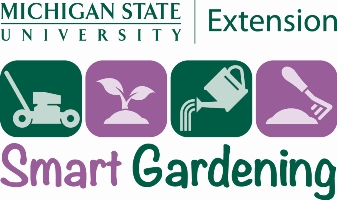According to the Earth Day Network, April 22nd (Earth Day) “marks the anniversary of what many consider the birth of the modern environmental movement in 1970.” The newly founded holiday united people from both ends of the political and socioeconomic spectrum. It also led to the creation of the Environmental Protection Agency in the United States.
This past Saturday, our city’s zoo held an Earth Day celebration. Though it was freezing and I could barely feel my fingers afterward, I really enjoyed chatting with the local organizations who where set up around the zoo. They had some great educational resources I can put to use on the Lot, and opportunities to fulfill the volunteer hours required for the Master Gardener Volunteer certification.
Wild Ones
This not-for-profit, national organization was founded in 1977 in Milwaukee, Wisconsin. Local chapters focus on sharing information with the community about landscaping with native plants. Their approach to gardening promotes “biodiversity and environmentally sound practices.” The local chapter for our community is the River City Wild Ones. More info about the national organization is available at www.wildones.org.
WMEAC
The West Michigan Environmental Action Council is a non-profit founded in 1968 and has since “provided West Michigan citizens a means to take action on behalf of the environment.” This group’s main focus is on “Building Sustainable Communities and Protecting Water Resources.” I have seen efforts of the WMEAC around the city in the form of rain barrel workshops and community garden projects. As I chatted with the lone, young woman manning this table, she told me the rest of her team was at the riverfront helping with sand bag efforts because of the flooding we have been having in our area. More info is at wmeac.org.
Grand Rapids Environmental Services
This is a department of our city, but I was pleased to see how much they were doing to integrate education of water quality into their everyday responsibilities. A direct mail program featuring environmental tips has been included in the city water billing system. Information about their efforts in building rain gardens to help manage storm water runoff is available on their website.
What I found most exciting is the new Adopt a Catch Basin program offered by Environmental Services. City residents can adopt a catch basin near their home, keeping it clean of leaves and debris, for award points through myGRCityPoints. The catch basin program educates city residents about stormwater runoff leading directly to the river and not passing through a treatment plant. This will be a definite addition to Lot gardening practices.
Blanford Nature Center
Last, but definitely not least, I stopped by the table for the Blanford Nature Center. I have visited the center several times before, along with what is becoming annual visits for the Garlic Mustard Pull. This place does a great job on providing children’s and community programs to teach good environmental stewardship. I enjoyed chatting about Toad Abodes, little shelters made from unused terracotta pots, with Kristin at this table. Another to-do for the Lot!
Education is the First Step
All of the programs reminded me we are a part of something larger and therefore have certain responsibilities to uphold when it comes to this planet’s ecosystem. When talking with all the various organizations, they stressed the importance of making educational materials available to the community. That way city residents can arm themselves with the knowledge and be empowered to make changes, even if small ones, to sustain the health of our environment for future generations.

